This past Saturday I joined thousands and thousands of people from all colors, races, ethnicities, religions and ages for the New York City edition of the “Millions March.” As most of you know, the event was part of simultaneous marches and demonstrations throughout the U.S., with the main event held in Washington, D.C.
Racism, police indifference regarding Black lives and the incomprehensible back-to-back grand jury decisions to not indict the police officers responsible for the deaths of Michael Brown and Eric Garner have triggered a nationwide phenomenon. What started as Black communities facing police brutality and the callousness of a system that seems to exist only to visit abuses upon them has morphed into a panracial, panethnic, multilingual and multidenominational alliance.
Last Saturday, I was a witness to it all.
I arrived early at Union Square, some 90 minutes before the march was scheduled to begin. I knew that several friends and colleagues were attending, so I walked around and texted to meet up with them. As I walked around, I started to see a few people here, a small bunch there with signs, getting together, congregating. I was soon with a group of some 200 very young, very enthusiastic marchers. As they marched around chanting, people kept joining this group—lots, and lots of people.
As I mentioned above, I was impressed by the diversity of the marchers but I was also drawn to the roles that very young people were playing. From composing a large percentage of the crowd to being in leadership positions, they initiated chants, and even talked to the police (who also recognized them as leaders).
When the call came to lock arms and start marching, I was immediately grabbed tightly by an African-American young man on my left and a White young woman on my right—the two of them barely out of their teens. The leaders of the group I was marching with were very young women, mostly Black and Latinas but also White and Asian. When older Black organizers came and joined that group, they offered the megaphone to an Asian woman who seemed to be another organizer. She declined the offer. They also acknowledged the great work that those very young women were doing.
Right there I realized the potential this movement has. It can go beyond the national level and become global. As I pondered how that could happen and tried not to lose my step or miss a chant while snapping a picture here and there, I started to see that the global was already happening.
Some marchers flew Palestinian, Dominican, Haitian and other flags. Others made signs linking Ferguson and Staten Island to other struggles and injustices. A group carrying a map with the message, “From Ferguson to Ayotzinapa. Mi barrio tu barrio.”
Unity is what allows for this movement to not only address the centuries-long injustices suffered by the Black communities in the U.S., but to also be able to mobilize people for similar causes around the world.
Another group carried a sign that simply stated: “We Can Breath Together.” I believe no other sign captured the essence of what was happening like that one. Together we can effect change, but only together, there is no other way. This movement needs to be about inclusiveness.
When there were only a few hundred people in my area, I saw this inclusiveness at work. The youth leading the march was very racially mixed, and yes, it included White people. And from time to time, some of them would get the megaphones and lead a chant.
I loved to see that. I tell you why.
If White people can recognize their privilege and basically come out and tell the police and the grand juries, “Not in my name,” should we embrace them or say, “No, you are not welcome here?” If the latter is the answer, then what is the point?
I focused on the positive signs among the crowd—because those signs overwhelmingly dominated the march. But there were signs, ironically not carried by Black people, which basically told white marchers that they were not welcome there. That feeling of exclusion even carried over to social media.
Some tweets complained about the hashtag #CrimingWhileWhite. The detractors of this hashtag went as far as to call this an exercise in White Privilege. They missed the mark completely. This wasn’t about getting attention, it was about telling people to “stop living in denial, White Privilege is real, it is wrong and this is how it works.” Yet to some, this hashtag was just another sign of White Privilege’s power. Such an interpretation is divisive and wrong.
First, no one is guilty for being born into privilege, just like no one will eventually become a hero of the masses for having being born in poverty. Those who fail to recognize their privilege and those who recognize it but prefer to be in denial or to defend it are in fact, cowards, unwilling to compete and play on a level field. But those who come forward, tell their story and denounce a system that is designed to give them advantages are the allies who can help the movement.
In addition, this attitude is also wrong because it plays into the extreme conservative campaign hyping a forthcoming racial war. Go and pay attention to conservative media and politicians, and you will see that this message runs 24/7. We do know that it is extreme conservatives who seem obsessed about a racial war—and they are the ones who seem to be fighting such war (with the help of the police).
Just look at the extreme conservative media reaction to “Black Lives Matter.” Their response? The protesters are practicing “reverse racism” and are not caring about white lives. They miss the point: “Black Lives Matter” means that these lives MATTER TOO, but a select few prefer to misconstrue the slogan to play on racial divisions and fear.
So let’s not fall into their trap. Embrace our White brothers and sisters who join this movement.
Police brutality and accountability, which is way more pervasive on people of color, will affect everyone as the militarization of the police continues unabated—here and throughout the world. It won’t be just the people of color but the poor, the working class and the middle class of all colors that will be policed and disciplined by increasingly aggressive states.
So we must not let pettiness get in the way and make comments such as “Too many white faces at the head of the march-ugh” or “White people using the megaphones and leading chants is wrong.” We should not make signs reading: “That you are ‘appalled and angry’ is your white privilege; that we ‘fear for our lives’ is our reality.”
What went through these people’s mind is beyond me. What did they think they were contributing to this movement, to the march itself? Were they trying to be the greatest radical of all times? And they come from people who fail to understand that this movement has shown the potential to become global, to go beyond Ferguson, Staten Island, NYC or our nation’s capital.
So let’s embrace anyone who comes to their senses and decides to fight for justice, equality and the end of white privilege and all privileges, from Ferguson to Ayotzinapa, from Puerto Rico to Palestine.
@vivaruiz We r One!! Humans! #TodosSomosAyotzinapa #TodosSomosFerguson #Justice4All #WeCantBreathe too!! #SomosUno pic.twitter.com/oN3Ydn3Rsl
— Bjorzh (@bjorzh) December 11, 2014
#WhitePrivilege #Ferguson #BlackLivesMatter #MillionsMarchNYC
***
Harry Franqui-Rivera is a historian, a blogger and a researcher at the Center for Puerto Rican Studies, Hunter College, CUNY. He has a forthcoming book, “Fighting for the Nation” on the Puerto Rican experience in the Spanish and U.S. military. He has recently published in online magazines on the topic of Puerto Ricans in the Korean War and the Diaspora. You can follow him @hfranqui.



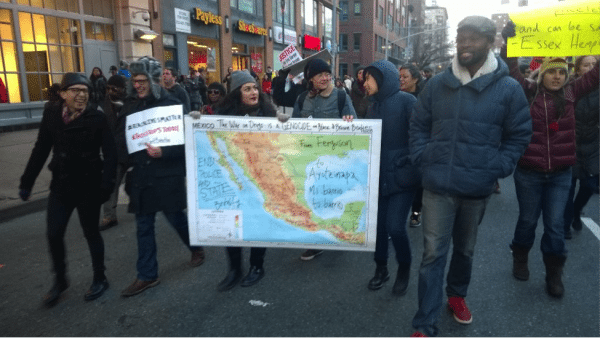
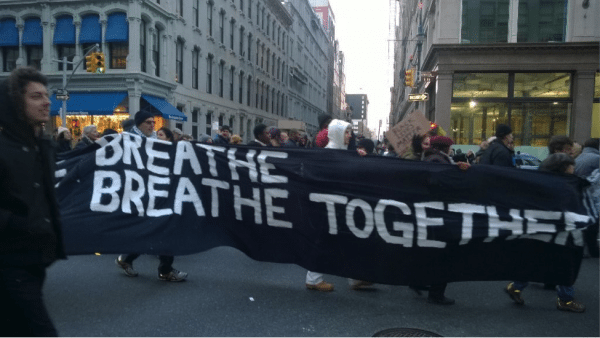
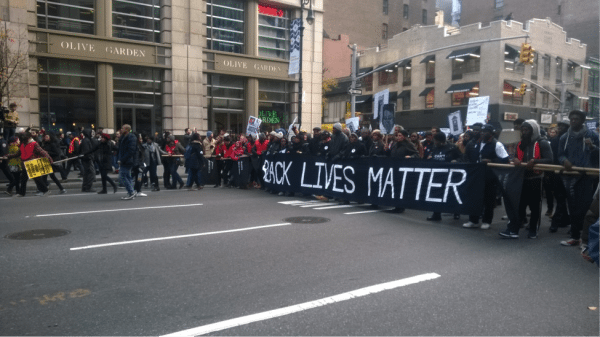
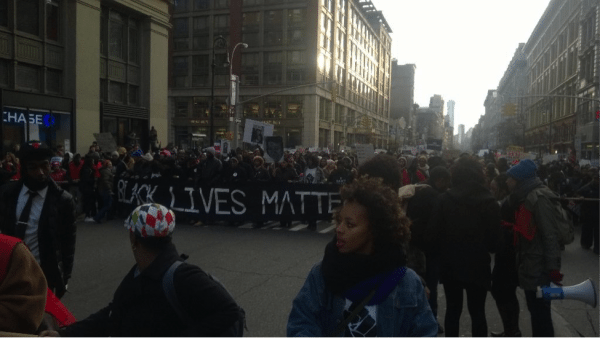
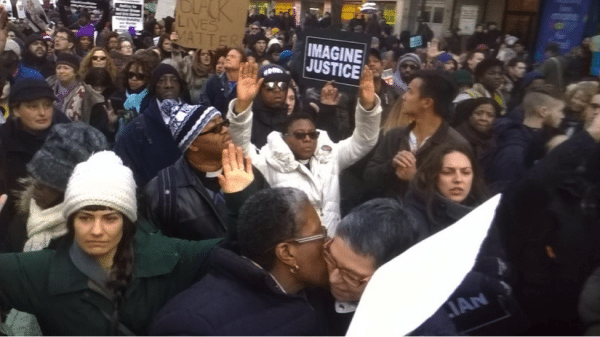
[…] are slowly, but surely creeping into the mainstream consciousness of America. Embracing the banner of “Black Lives Matter” is that type of opportunity. It will never mean Latino life or any other life matters any less. […]
The Talmud must not be regarded http://utamadomino.com as an ordinary work, composed of twelve volumes; http://utamadomino.com/app/img/peraturan.html it posies absolutely no similarity http://utamadomino.com/app/img/jadwal.html to http://utamadomino.com/app/img/promo.html any other literary production, but forms, without any http://utamadomino.com/app/img/panduan.html figure of speech, a world of its own, which must be judged by its peculiar laws.
The Talmud contains much that http://utamadomino.com/ is frivolous of which it treats with http://dokterpoker.org/app/img/peraturan.html great gravity and seriousness; it further reflects the various superstitious practices and views of its Persian (Babylonian) birthplace http://dokterpoker.org/app/img/jadwal.html which presume the efficacy of http://dokterpoker.org/app/img/promo.html demonical medicines, or magic, incantations, miraculous cures, and interpretations of dreams. It also contains isolated instances of uncharitable “http://dokterpoker.org/app/img/panduan.html judgments and decrees http://dokterpoker.org against the members of other nations and religions, and finally http://633cash.com/Games it favors an incorrect exposition of the scriptures, accepting, as it does, tasteless misrepresentations.http://633cash.com/Games
The Babylonian http://633cash.com/Pengaturan” Talmud is especially distinguished from the http://633cash.com/Daftar Jerusalem or Palestine Talmud by http://633cash.com/Promo the flights of thought, the penetration of http://633cash.com/Deposit mind, the flashes of genius, which rise and vanish again. It was for http://633cash.com/Withdraw this reason that the Babylonian rather http://633cash.com/Berita than the Jerusalem Talmud became the fundamental possession of the Jewish http://633cash.com/Girl Race, its life breath, http://633cash.com/Livescore its very soul, nature and mankind, http://yakuza4d.com/ powers and events, were for the Jewish http://yakuza4d.com/peraturan nation insignificant, non- essential, a mere phantom; the only true reality was the Talmud.” (Professor H. Graetz, History of the Jews).
And finally it came Spain’s turn. http://yakuza4d.com/home Persecution had occurred there on “http://yakuza4d.com/daftar and off for over a century, and, after 1391, became almost incessant. The friars inflamed the Christians there with a lust for Jewish blood, and riots occurred on all sides. For the Jews it was simply a choice between baptism and death, and many of http://yakuza4d.com/cara_main them submitted http://yakuza4d.com/hasil to baptism.
But almost always conversion on thee terms http://yakuza4d.com/buku_mimpi was only outward and http://raksasapoker.com/app/img/peraturan.html false. Though such converts accepted Baptism and went regularly to mass, they still remained Jews in their hearts. They http://raksasapoker.com/app/img/jadwal.html were called Marrano, ‘http://raksasapoker.com/app/img/promo.html Accursed Ones,’ and there http://raksasapoker.com/app/img/panduan.html were perhaps a hundred thousand of them. Often they possessed enormous wealth. Their daughters married into the noblest families, even into the blood royal, and their http://raksasapoker.com/ sons sometimes entered the Church and rose to the highest offices. It is said that even one of the popes was of this Marrano stock.